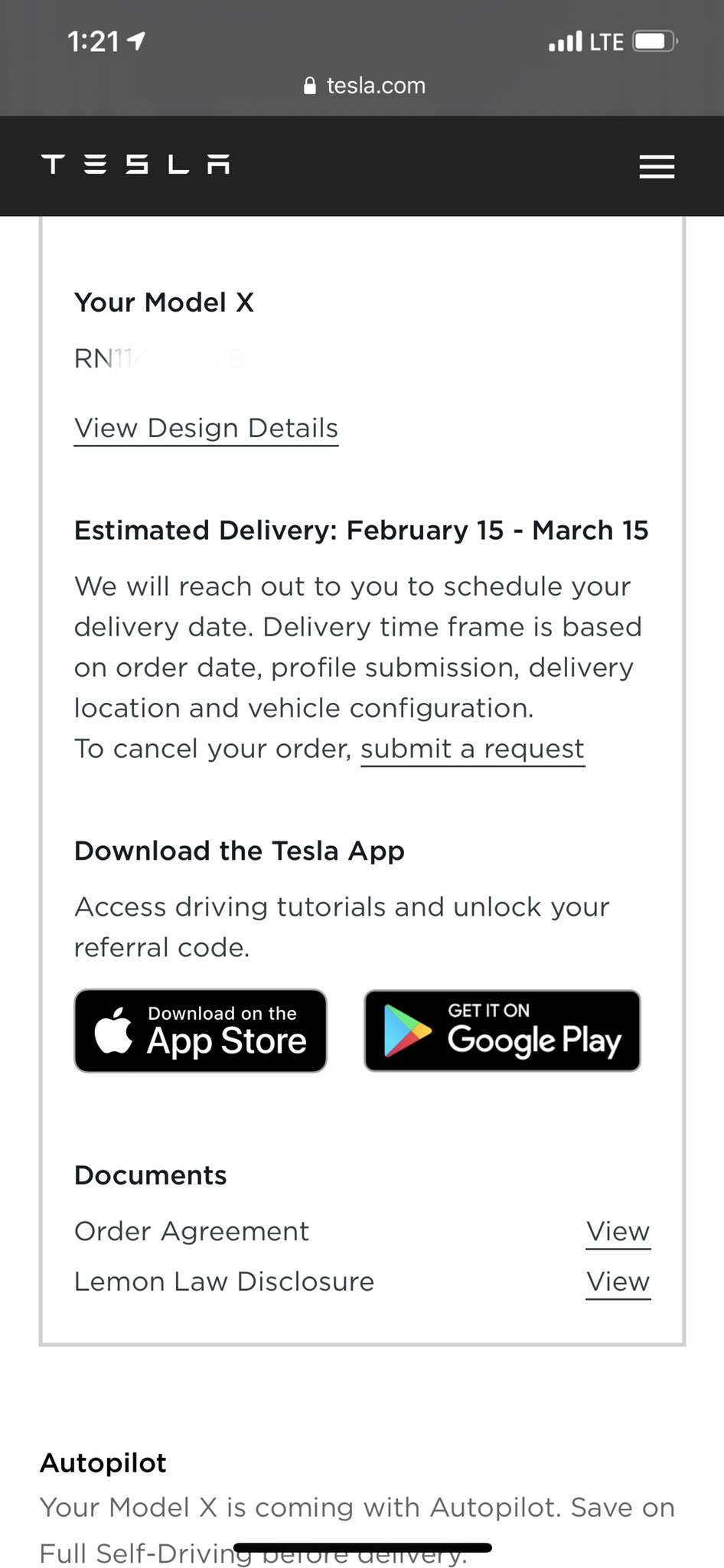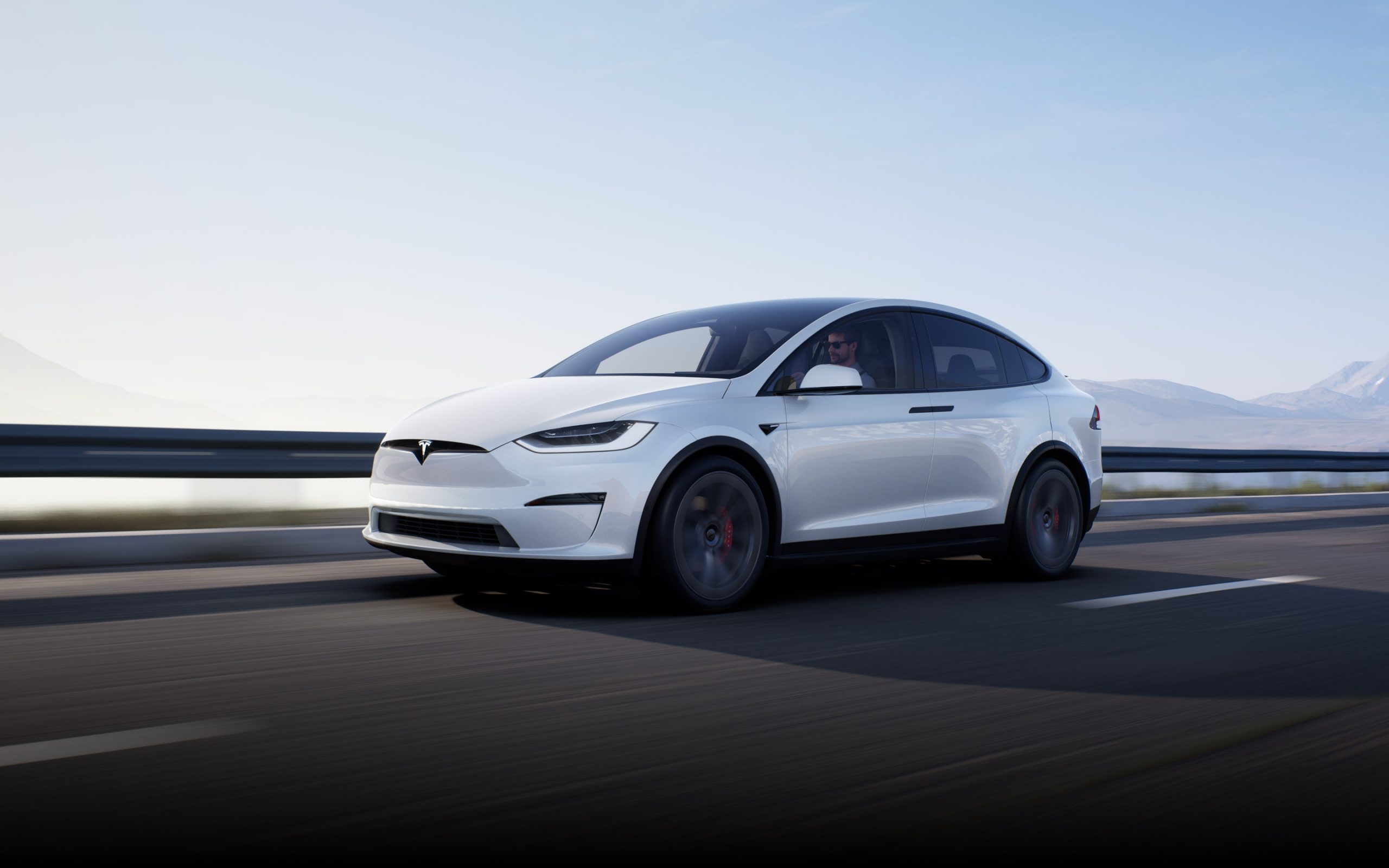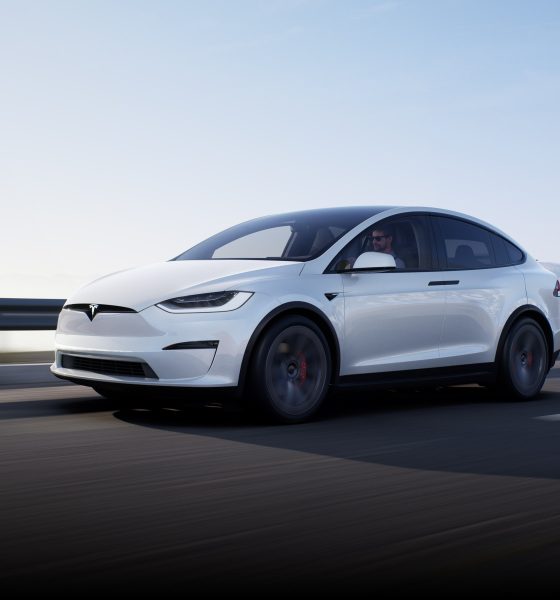Tesla is contacting those who have pre-ordered the “Refreshed” versions of the Model X crossover, communicating that they should prepare for delivery between February 15th and March 15th.
Model S and Model X Refresh
In December, Tesla shut down production lines of the Model S and Model X at its Fremont, California, production facility, indicating that a refresh, or updating, of its two flagship vehicles would take place. After heavy speculation, Teslarati, in conjunction with the Kilowatts, located new builds of the Model S at the Fremont Factory’s test track. The car was sporting a wider body among several other external modifications. However, the car wasn’t subjected to a complete overhaul on the outside. This wasn’t the case for the interior.
Upon the release of the company’s Q4 2020 Earnings Update Letter, Tesla revealed new pictures of the Model S interior and expanded on its website that the same changes would be made to the Model X. Along with a new touchscreen design, the rest of the interior saw some major renovations, including the addition of a rear screen for passengers, tri-zone climate controls, similar to the Model 3 and Model Y, and a new Yoke steering wheel.
Production of the past Model S and Model X builds has evidently halted, according to the Tesla Parts Catalog. It appears that Raven S and X builds, which pack the 100 kWh battery pack with the powerful permanent magnet synchronous reluctance rear motor, has been halted, as production dates have been given their closing production month of January 2021.
The expected delivery of the refreshed S/X begins the second to the third week of this month as shared by Elon during the last earnings call, so this has been our hunch.
The Tesla parts website also just updated to list the Raven S/X as ending "April 2016 to January 2021". ✅ https://t.co/fXmsKWPeaz pic.twitter.com/5zBY4Sxw4z
— Teslascope (@teslascope) February 10, 2021
Model X Refresh First Deliveries
After the production of Model S and Model X was halted to update production lines, it was evident that Tesla was looking to refresh the car. After they announced it during the Earnings Call, CEO Elon Musk stated that he anticipated deliveries beginning this month for the Model S, and later for the Model X.
Musk said:
“We’re super excited to announce the new Model S and Model X Plaid — are in production now and will be delivered in February. So we’ve been able to bring forward the fab, Model S and X. And Model S will be delivered in February and Model X a little later.”
Tesla’s Design Studio for the United States indicates deliveries won’t start until April. However, Tesla is updating the accounts of those who have pre-ordered the Model X, by telling them an estimated delivery date of “February 15 – March 15.”
One pre-orderer, known as Joe, told Teslarati that his account has been updated and he is to expect delivery of his new car between February 15th and March 15th. He shared the photo of his account, indicating that delivery should be taking place within the next month.
Credit: @ Joe13644982 | Twitter
It is expected that Model S deliveries will take place first, according to Musk. However, the Model X could begin deliveries relatively soon after the Model S, especially based on the message Tesla is providing to owners on their account page. An exact date has not yet been given to owners, but we can confirm that Tesla’s timeline is pretty close to what Musk detailed during the Earnings Call.
Tesla’s refreshed Model X comes in two variants currently: a Long Range Dual Motor All-Wheel Drive for $89,990, and a Tri-Motor All-Wheel Drive “Plaid” variant, for $119,990. Both prices are before potential savings.

News
Tesla China quietly posts Robotaxi-related job listing
Tesla China is currently seeking a Low Voltage Electrical Engineer to work on circuit board design for the company’s autonomous vehicles.

Tesla has posted a new job listing in Shanghai explicitly tied to its Robotaxi program, fueling speculation that the company is preparing to launch its dedicated autonomous ride-hailing service in China.
As noted in the listing, Tesla China is currently seeking a Low Voltage Electrical Engineer to work on circuit board design for the company’s autonomous vehicles.
Robotaxi-specific role
The listing, which was shared on social media platform X by industry watcher @tslaming, suggested that Tesla China is looking to fill the role urgently. The job listing itself specifically mentions that the person hired for the role will be working on the Low Voltage Hardware team, which would design the circuit boards that would serve as the nervous system of the Robotaxi.
Key tasks for the role, as indicated in the job listing, include collaboration with PCB layout, firmware, mechanical, program management, and validation teams, among other responsibilities. The role is based in Shanghai.
China Robotaxi launch
China represents a massive potential market for robotaxis, with its dense urban centers and supportive policies in select cities. Tesla has limited permission to roll out FSD in the country, though despite this, its vehicles have been hailed as among the best in the market when it comes to autonomous features. So far, at least, it appears that China supports Tesla’s FSD and Robotaxi rollout.
This was hinted at in November, when Tesla brought the Cybercab to the 8th China International Import Expo (CIIE) in Shanghai, marking the first time that the autonomous two-seater was brought to the Asia-Pacific region. The vehicle, despite not having a release date in China, received a significant amount of interest among the event’s attendees.
Elon Musk
Elon Musk and Tesla AI Director share insights after empty driver seat Robotaxi rides
The executives’ unoccupied tests hint at the rapid progress of Tesla’s unsupervised Robotaxi efforts.

Tesla CEO Elon Musk and AI Director Ashok Elluswamy celebrated Christmas Eve by sharing personal experiences with Robotaxi vehicles that had no safety monitor or occupant in the driver’s seat. Musk described the system’s “perfect driving” around Austin, while Elluswamy posted video from the back seat, calling it “an amazing experience.”
The executives’ unoccupied tests hint at the rapid progress of Tesla’s unsupervised Robotaxi efforts.
Elon and Ashok’s firsthand Robotaxi insights
Prior to Musk and the Tesla AI Director’s posts, sightings of unmanned Teslas navigating public roads were widely shared on social media. One such vehicle was spotted in Austin, Texas, which Elon Musk acknowleged by stating that “Testing is underway with no occupants in the car.”
Based on his Christmas Eve post, Musk seemed to have tested an unmanned Tesla himself. “A Tesla with no safety monitor in the car and me sitting in the passenger seat took me all around Austin on Sunday with perfect driving,” Musk wrote in his post.
Elluswamy responded with a 2-minute video showing himself in the rear of an unmanned Tesla. The video featured the vehicle’s empty front seats, as well as its smooth handling through real-world traffic. He captioned his video with the words, “It’s an amazing experience!”
Towards Unsupervised operations
During an xAI Hackathon earlier this month, Elon Musk mentioned that Tesla owed be removing Safety Monitors from its Robotaxis in Austin in just three weeks. “Unsupervised is pretty much solved at this point. So there will be Tesla Robotaxis operating in Austin with no one in them. Not even anyone in the passenger seat in about three weeks,” he said. Musk echoed similar estimates at the 2025 Annual Shareholder Meeting and the Q3 2025 earnings call.
Considering the insights that were posted Musk and Elluswamy, it does appear that Tesla is working hard towards operating its Robotaxis with no safety monitors. This is quite impressive considering that the service was launched just earlier this year.
Elon Musk
Starlink passes 9 million active customers just weeks after hitting 8 million
The milestone highlights the accelerating growth of Starlink, which has now been adding over 20,000 new users per day.

SpaceX’s Starlink satellite internet service has continued its rapid global expansion, surpassing 9 million active customers just weeks after crossing the 8 million mark.
The milestone highlights the accelerating growth of Starlink, which has now been adding over 20,000 new users per day.
9 million customers
In a post on X, SpaceX stated that Starlink now serves over 9 million active users across 155 countries, territories, and markets. The company reached 8 million customers in early November, meaning it added roughly 1 million subscribers in under seven weeks, or about 21,275 new users on average per day.
“Starlink is connecting more than 9M active customers with high-speed internet across 155 countries, territories, and many other markets,” Starlink wrote in a post on its official X account. SpaceX President Gwynne Shotwell also celebrated the milestone on X. “A huge thank you to all of our customers and congrats to the Starlink team for such an incredible product,” she wrote.
That growth rate reflects both rising demand for broadband in underserved regions and Starlink’s expanding satellite constellation, which now includes more than 9,000 low-Earth-orbit satellites designed to deliver high-speed, low-latency internet worldwide.
Starlink’s momentum
Starlink’s momentum has been building up. SpaceX reported 4.6 million Starlink customers in December 2024, followed by 7 million by August 2025, and 8 million customers in November. Independent data also suggests Starlink usage is rising sharply, with Cloudflare reporting that global web traffic from Starlink users more than doubled in 2025, as noted in an Insider report.
Starlink’s momentum is increasingly tied to SpaceX’s broader financial outlook. Elon Musk has said the satellite network is “by far” the company’s largest revenue driver, and reports suggest SpaceX may be positioning itself for an initial public offering as soon as next year, with valuations estimated as high as $1.5 trillion. Musk has also suggested in the past that Starlink could have its own IPO in the future.










